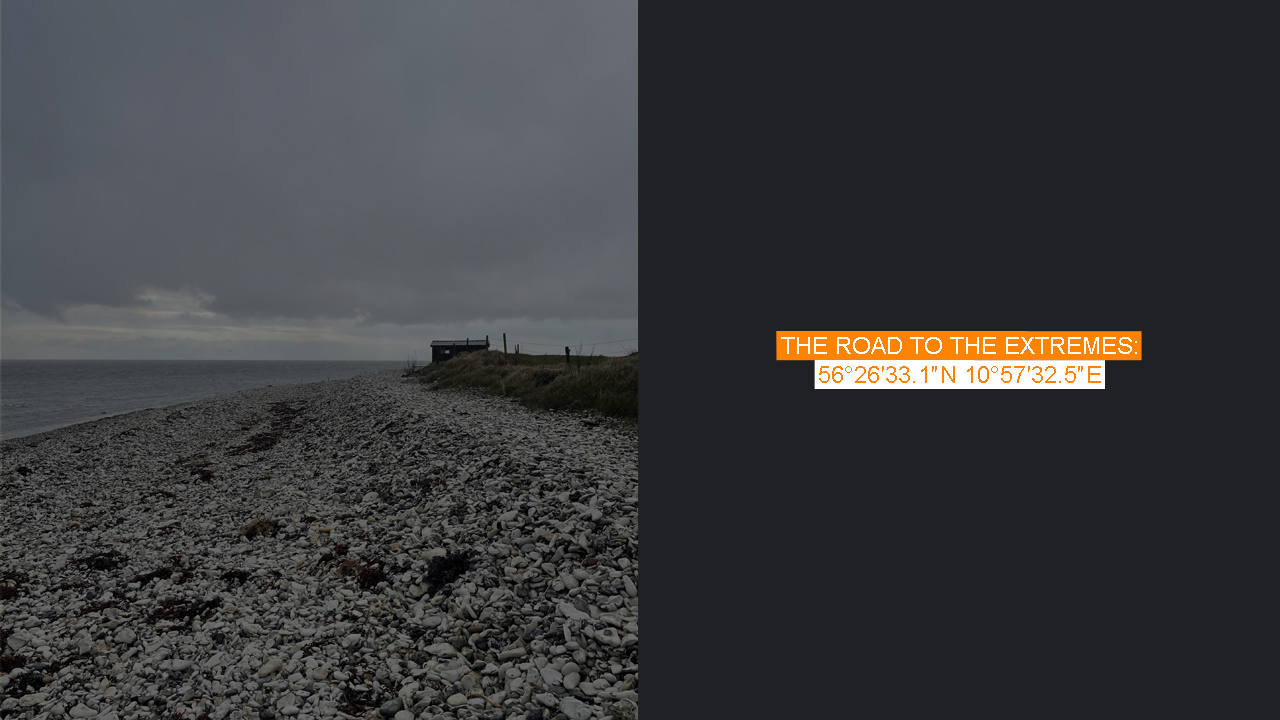While Denmark boasts several well-known geographic landmarks — from Møllehøj, the country’s highest point, to Grenen, where two seas dramatically meet, and Blåvandshuk with its sweeping beaches and classic lighthouse — Fornæs feels like a place that quietly slips past most people’s attention. To me, it seemed more secluded, less visited — perhaps in the same category as Padborg in terms of obscurity. And yet, Fornæs, marking the easternmost tip of Jutland, holds a quiet, stoic charm.
Like many of Denmark’s landmarks, Fornæs is easy to reach by road. I made the 3.5-hour drive from Copenhagen, passing through scenic stretches — from the flat, open plains of Zealand to the gently rolling countryside of Jutland. As I approached Grenå, the last town before Fornæs, the weather began to shift. Rain rolled in steadily, and by the time I arrived, the sky had collapsed into a misty grey. Still, even under the downpour, the landscape carried a rugged, windswept beauty.
Fornæs’ most prominent feature is its lighthouse — a 27-meter-tall sentinel that has guided sailors through the choppy Kattegat waters since 1863. Originally built to aid navigation along this treacherous stretch of coast, the lighthouse remains operational to this day, its beam still sweeping across the sea for several nautical miles. It stands not just as a functional structure, but as a symbol of the region’s maritime history — weathered, purposeful, and resolute.
The coastline around Fornæs is shaped by deep geological time. Like much of Denmark’s shore, it’s built on ancient limestone — a rock forged millions of years ago, now carved into jagged cliffs and ledges. Rich with fossils and dotted with flint, the area draws interest not only for its beauty but also for its geological significance.
The beach is part of the larger Kattegat shoreline, known for its flintstone formations that wash up along the tide. It’s a place where science and scenery meet — where each rock tells a story older than civilization itself. The cliffs are also home to hardy plant species, some of them rare, that thrive in the salty winds and exposed terrain. As a protected natural area, Fornæs offers a glimpse into Denmark’s wilder side — both in terms of natural history and coastal ecology.
What Fornæs lacks in tourist traffic, it more than makes up for in atmosphere. Even in the rain, the area felt profoundly peaceful. I stood for a while by the lighthouse, watching the sea shift and churn, imagining the generations of sailors who once relied on that steady beam of light.
Surrounded by open fields, crashing waves, and the cries of seabirds, I felt like I’d reached a threshold — the quiet edge of the country, where time slows and the noise of the world recedes. In the misty weather of early April, the place felt all the more remote, detached from the busier rhythms of Denmark’s tourist circuit.
I could only imagine how different it must be in summer — with the warmth of the sun, longer days, and the soft bustle of the high season. There are coastal trails perfect for walking, and the area is well-known among birdwatchers, especially during migration periods. Still, there was something captivating about visiting in the off-season — a chance to experience the raw, unfiltered beauty of Fornæs, where wind, sea, and stone meet in quiet conversation.

